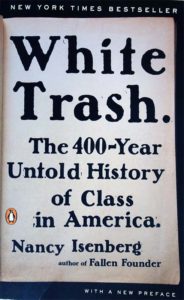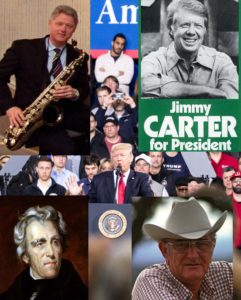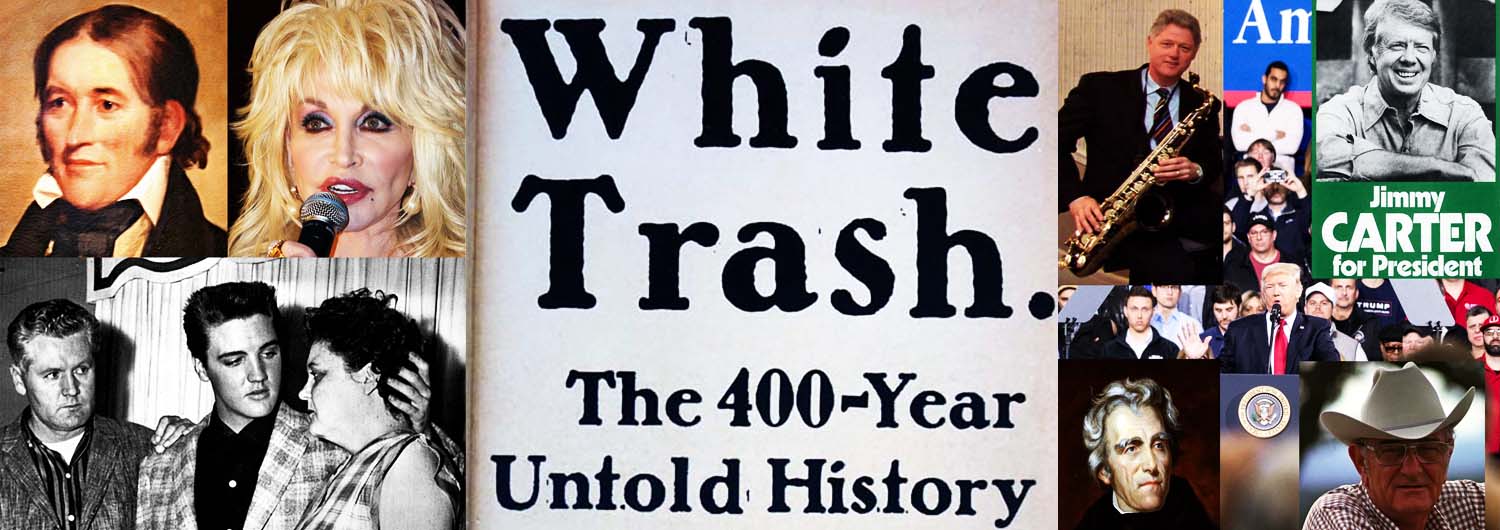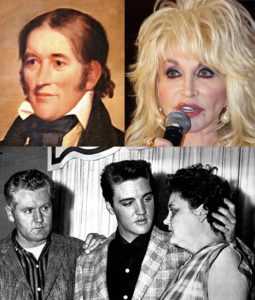 White Trash: The 400-Year Untold History of Class in America by Nancy Isenberg (Penguin, 2017)
White Trash: The 400-Year Untold History of Class in America by Nancy Isenberg (Penguin, 2017)
This book took me about 3 weeks to read. (Though there was a five-day break in the middle when Mrs SC and I were in back in Brussels.)
It is a very well written, very well researched account of class – or at any rate one class – in America. The USA lays claim to being the land of opportunity where “all men are created equal”. But it isn’t, and this book clearly demonstrates it never has been.
The British class system through a distorting mirror
The USA inherited a class structure from the earliest British colonisers. In the 200-odd years before the American Revolution, the British set up a class structure in their colonies that was based on the class structure back home. Yet it was the British class structure seen through a distorting mirror. The distortions were caused by the attitudes of the governing class in Britain and in the colonies towards the poor. These attitudes and theories about who the poor were, why they were poor and their own moral responsibility for their poverty, influenced the way in which the poor in America were treated and used. And their influence continues.
All the colonists were not equal. Some were rich plantation owners and some were aristocrats from the old country. Many were members of the nascent British middle class – merchants perhaps or tradesmen – seeking to better themselves in the colonies. Others, though, were indentured servants.
Recruited from among the poorest of the British poor, they were transported as punishment for crime or simply to get rid of them from the home country. This class of people were treated as temporary slaves. Once freed from their indentured status, they often found themselves in no better a situation in America than the one they had left behind in Britain. (Here’s a blog article about indentured servants – “white slaves” – in Virginia and Maryland.)
Mired in poverty
It is Nancy Isenberg’s thesis that the modern white trash are descend from the British poor. The poor whose position in the American colonies was always on the margins of society and mired in poverty. She writes particularly well about the various theories of the elite to explain the poor class and vilify them. Theories that allowed the rich to excuse not trying to eradicate their poverty. Theories that justified exploiting them.
While the American myth suggests that everybody has the opportunity to become somebody in the USA, White Trash emphasises how difficult this is and has always been. There are examples in the book of people who did cross the class barrier while flying the flag for their class origins. Davy Crockett was perhaps the first; Elvis Presley and Dolly Parton are named among the more recent. But they appear statistically to be rather few.
Many of those who made the journey from poor white trash to middle-class respectability, it seems, did not make a splash. Few are named in the book. However several academics and civil servants, especially those engaged in the New Deal, appear to be examples of this group.
From Andrew Jackson to Donald Trump

There are also examples of people – especially politicians – not from white trash backgrounds, who nevertheless presented themselves as coming from white trash in order to win political office. Andrew Jackson was among the first and Lyndon Johnson, Jimmy Carter and Bill Clinton are among the more recent. (In the illustration here, Clinton’s saxophone, Carter’s rolled up sleeves and Johnson’s ten-gallon hat are all white trash attributes.)
Donald Trump does not present himself as coming from white trash. But images associated with his Presidency as well as things he says are designed to play to white trash voters. In this, Trump clearly belongs in the same tradition as Andrew Jackson.
Slavery
The early colonial plantation owners added a further element to the American class soup not to be found in Britain – the slaves brought from Africa to labour in the fields. The African slaves formed a distinct class of their own. More oppressed and more isolated than the poor whites, but also marked out by the colour of their skins. Even before the Civil War the black slaves and the white poor were set against one another.
Although their situations were very similar, the slaves were at least housed and fed. By contrast the white poor were left to their own devices. Of course, the whites were “free” and could vote; something they could feel put them in a superior position at least to the slaves. The black slaves were the property – cattle – of their owners, and their lives were in the hands of the rich in a different way.
Black Poor vs White Trash
A large part of White Trash is taken up with the conflict between these two classes, especially after the Civil War. It was then the real social difference between them became less, though the perceived social distinctions became more important. At least to the poor whites. The question of “white blood” and “black blood” and sexual intercourse leading to “mixed blood” children also became a far more significant issue.
The final chapter of the book is key, but I read the book through to this point thinking that I was missing something. What I missed were accounts by members of the poor white class themselves. Stories of the efforts they have made historically to raise themselves from their situation. (In my mind, I was comparing White Trash with E.P. Thompson’s The Making of the English Working Classes.) But there is very little – vanishingly little – of that sort of material in the book. Why?
The myth of equality and the dream of success
Perhaps it’s because Nancy Isenberg prefers to focus on what the elite have done to (and sometimes for) the white trash. Or perhaps it’s because examining the American poor in the style of Thompson would have opened her up to accusations of being a communist.
Or perhaps it is because such a class conscious perspective simply does not exist – has never existed – in the USA. Perhaps examples of white trash class consciousness and co-operative action to improve their lot are insignificant.
The final chapter suggests the latter.
It is as though the USA’s myth of equality and the dream of success has been so powerful and so long established and renewed that it has not allowed any other interpretation to develop. Besides, the blacks and poor whites could always be set against one another.
White Trash not working class
But I note this book is about class in America and not about the working class. (The people the British would call “working class” Americans would probably prefer to call “middle class”.) The focus of the book is on the people at the very bottom, below the educated and self-improving working class. (There is no mention in the book of labour unionism and precious little of the industrial working class – coal-miners in Virginia and Pennsylvania apart.)
Perhaps a book like Thompson’s about the making of the American working class remains to be written. Or perhaps (probably more likely) it exists but remains for me to find. In the meantime, White Trash was a fascinating historical account and presents a very different slant on the history of the USA than the one usually promoted, with which I am most familiar.
Illustrations
Preparing this review for TheSupercargo.com, I went on line to look for some open access images to use as illustrations. That was interesting again. I knew, of course, the term “white trash” is loaded with significance in the USA. And I knew (from White Trash the book if from nowhere else) that the term has undergone a revival in recent years. That there are Americans now who are – or who claim to be – proud of their white trash status.
Still, I hadn’t expected to find photos of people posing in a way reminiscent of punk rockers from the late 1970s. Nor did I know that middle-class Americans hold white trash fancy dress parties. It’s a Google catagory. Perform a Google images search for “white trash” and you’ll see what I mean.
The illos I chose in the end all come from Wikipedia, with the exception of the cover photo of White Trash which I took myself of my reading copy.
I wrote this article for the #Blogg52 challenge.



An excellent review! I’ll be interested to read the book. As President Lyndon Johnson once said, “If you can convince the lowest white man he’s better than the best colored man, he won’t notice you’re picking his pocket. Hell, give him somebody to look down on, and he’ll empty his pockets for you.” The poor white population of the US has been played for at least a century, and they have no idea who their real enemy is.
Hi Laurel!
Thanks for the comment and welcome to TheSupercargo.com.
If Isenberger is to be believed (and she makes a good case) then the USA’s – and before that the English colonies’ – poor whites have had a raw deal for a very long time indeed. My interest in the earlier period relates to Elin’s Story because the population explosion in England during the Tudor period was an issue of debate throughout the 1500s. And in the debate you see interpretations of poverty and vagrancy that clearly informed the subsequent debate in the American colonies.
The Tudor population explosion coincided with the sweeping away of the social and health support provided by the Church following the Reformation and resulted in a noticeable increase in “sturdy beggars”. Sturdy beggars meant people who looked like they were strong enough to work but who had “chosen” a life as beggars. The 1601 Act for the Relief of the Poor was, I think, the first law that distinguished between “the deserving poor” – hard-working, disabled, a neighbour and a home owner – and “the undeserving poor” – idle, pretending to be disabled, foreign (which could mean from another county), homeless. But the concepts existed earlier, and the sturdy beggars were certainly undeserving.
Some were former monks, nuns and others turned out of their monasteries. Many more were country people driven from their lands by landlords who were already enclosing farming land for sheep breeding. (Something that was to go on for centuries.) They were the target of moral sermons on sloth, of local village gangs that chased them from place to place, of educated treatises discussing the origins of their natural indolence, of local constables who arrested them for vagrancy. For vagrancy the penalties were severe. Following the 1547 anti-vagrancy acts the harshest penalties were enslavement or banishment, but there was also branding on the face with an R (for rogue) or a V (for vagrant) and whipping. We haven’t quite got back to that but you can see the way the wind is blowing.
By the late 1600s, banishment had morphed into indentured servitude in the colonies. It’s an indication of how important the American colonies were to Britain as a dumping ground for vagrants that following American Independence the prisons of Britain quickly filled to overflowing. It was such a severe problem the government was prepared to finance the First Fleet and subsequent expeditions to establish Australia as a penal colony.
Oops – sorry for all that. Sometimes I regret/forget I no longer work as a history teacher.
🙂
Mycket intressant att läsa din intervju! Tack 😀